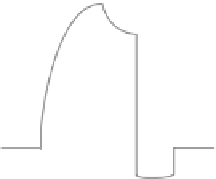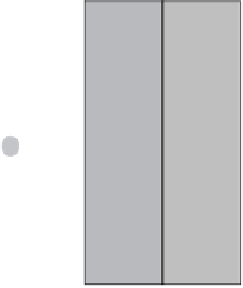Agriculture Reference
In-Depth Information
100
200
300
400
500
600
Computer readout
(sensorgram)
Transducer
Biorecognition element
Antibody
Antigen
Interfering compounds
Fig. 20.1
General format of a biosensor. The biorecognition element is in spatial contact with the transducer,
which converts the signal to an output shown on the computer.
A transducer (Table 20.2) is a device, such as a piezoelectric crystal, microphone, or pho-
toelectric cell, which converts input energy of one form into output energy of another. The
output signal generated is proportional to the concentration of the target analyte of interest
(Luong et al., 1995). A readout device typically is composed of a computer-linked mon-
itor that presents the data in the form of a sensorgram, which is a graph that illustrates
Table 20.1
The recognition elements commonly used in sensor systems
1.
Antibodies and antibody fragments—derived by enzyme digestion
or genetic engineering (Fab fragment, scFv, and diabody)
2.
Enzymes—for example, those specific for one particular substrate
(i.e., horseradish peroxidase for hydrogen peroxide)
3.
Cell membrane receptors
4.
A living cell—eukaryotic or prokaryotic
5.
Nucleic acid-based probes—DNA and RNA or peptide nucleic acid
6.
Aptamers
7.
Chemically generated recognition surfaces—including plastibodies
(artificial antibodies or molecularly imprinted polymers)





































Search WWH ::

Custom Search